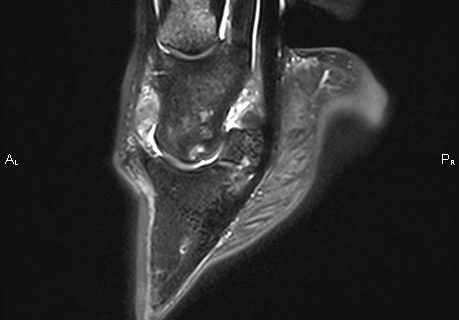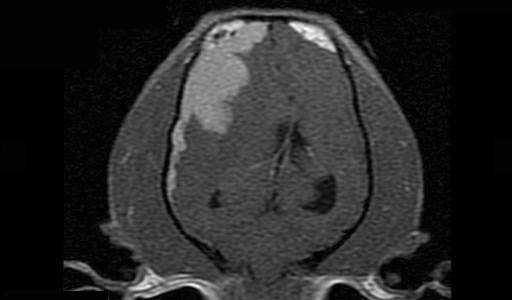-
 Fibrocartilagenous emboli (vascular compromise) in a dog's lumbar spinal cord
Fibrocartilagenous emboli (vascular compromise) in a dog's lumbar spinal cord -
 Sagittal T2-weighted image of a horse's distal extremity
Sagittal T2-weighted image of a horse's distal extremity -
 Dorsal T1-weighted image of the brain after IV-contrast administration. "Dural tail sign" associated with meningioma in a dog.
Dorsal T1-weighted image of the brain after IV-contrast administration. "Dural tail sign" associated with meningioma in a dog.
1 / 1
Magnetic Resonance Imaging (MRI) uses strong magnetic fields to align spinning atomic nuclei (usually hydrogen protons) within body tissues, then uses a radio signal to disturb the axis of rotation of these nuclei and observes the radio frequency signal generated as the nuclei return to their baseline states. An advantage of MRI is its ability to produce images in axial, coronal, sagittal and multiple oblique planes with equal ease. MRI scans give the best soft tissue contrast of all the imaging modalities. With advances in scanning speed and spatial resolution, and improvements in computer 3D algorithms and hardware, MRI has become an essential tool in musculoskeltal radiology and neuroradiology. (Adapted from Wikipedia. Read More…)